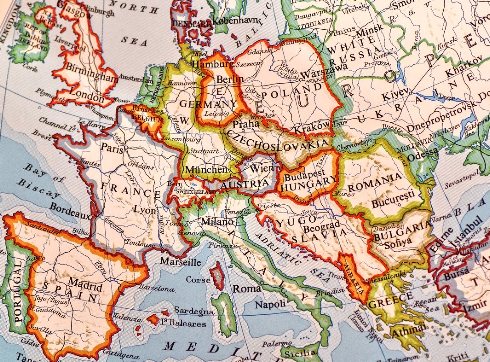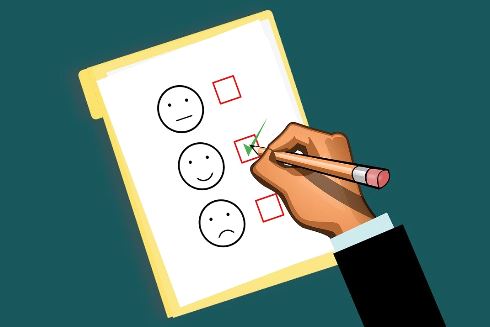Growth is key to businesses, along with ambition, for those who seek to capitalise on a gap in the market. Many use the measurement of growth as the benchmark of success, and so, are continually seeking new ways to grow.
Bringing in more customers, and achieving a high level of customer retention thereafter, are the primary avenues of achieving growth.

Welcome offers are key when attracting and retaining new customers in any industry.
Seen utilised by land-based companies and those competing online, some businesses across the continent have been deploying the marketing strategy of welcome offers. Also known as new customer offers, they are often seen in the most competitive sectors. However, there is an argument to be made for many other businesses embracing welcome offers in the pursuit of growth, especially if followed up by an apt loyalty programme.
Where are these welcome offers exemplified?
All stores need to be welcoming, but for growth, businesses can try to attract new customers with welcome offers.
While many larger businesses use welcome offers as a part of their marketing strategies, small businesses, coupling these offers with other digital marketing efforts, can become much more prominent. Now, you’ll see companies big and small with welcome offers. Some want to become more dominant at the top of their respective sector, others are trying to make a name for themselves, with a welcome offer being an ingenious way to get new customers to try their product or service with the hope of reciprocity taking effect.
A prime example of this is the UK, Ireland, and Netherlands-based healthy food business Graze. Wanting to get the word out early on, Graze has long-offered new customers free selections to get started. At the time of writing, they offered the first box of snacks ordered for free as well as the fifth box ordered being free. This works as not only an appealing welcome offer, but also a form of loyalty programme, to an extent.
Further, at the top end of the colossal video games industry, all console creators offer a kind of welcome offer. In the sector, players need the hardware to then go on and buy subsequent games ? keeping money coming into the industry. So, to make the entrance more appealing to new players, Microsoft, Nintendo, and Sony offer their home consoles in a bundle with one or more games, with the bundle price offering significant savings to buying all of the items separately. The Sony PlayStation 4 1TB Console, for example, is the same price on its own or with the LEGO Movie 2 Videogame Minifigure Edition.
The practice of being able to try before you buy was very prevalent across gaming in decades past, with demos and demo discs being standard practice. Now, some online-based gambling outlets are rekindling this free play time through their welcome bonuses. Instead of needing to pay in money before knowing if the player likes the games, people can now get no deposit free spins by registering as a new customer and without committing money to the gaming platform. At online casino sites like Wink Slots, for example, the new customer gets ten free spins per day over three days across three games, 99 Time, white Wizard Deluxe, and Sugar Train, allowing plenty of range for them to try.
Offering a way for new customers to try a product for free or to get a product cheaper is catching on across several sectors. Modern customers are, generally speaking, mindful of their money, with free samples and money-saving options being welcomed.
Are there any particular European countries where welcome offers are more appealing?

Europe is a vast continent with a tremendous amount of diversity present in each nation.
As every good marketing organiser recognises, each country’s people have different needs and different ways of thinking about specific products. Then, other economic concerns need to be taken into consideration. Many big companies, often American companies, in the past have aimed to expand into Europe or Asia. Still, unlike North America ? much of which is one country ? there is a tremendous amount of variety within other continents, particularly Europe. Because of this, national markets need to be looked at as individuals, as opposed to part of a broader continental market.
So, if you’re looking to grow your business into another European country, you’ll need to do the research and see what marketing strategies work and what the people prefer there. In some countries, an online strategy combined with a welcome offer seems the most prudent given eCommerce trends. The list of the top ten biggest spenders online per capita of 2019 featured three European countries: the United Kingdom (#1, £3041), France (#4, £1472), and Germany (#10, £970).
In other countries, presenting offers online, or offering new customer perks akin to what’s more commonly seen, may not be as prudent. Some countries may be sceptical of the idea of effectively free items coming from an online vendor. In other nations, the market may be willing to buy into a new customer offer, but then not go further, putting the business at a loss on the campaign.
Turning new customers into loyal customers

Keeping a customer happy is very important, and loyalty programmes can help to keep customers returning.
Welcome offers can be very effective in giving a visible bump in sales, and also illustrate a form of growth in users and customers. However, this growth could be considered to be superficial in a one-shot campaign unless many of the newly welcomed customers are retained. So, many European businesses have turned to loyalty programmes to help convert new customers into regular customers.
The loyalty programme can be as simple as offering a bonus after X-number of purchases, like what can be seen in several hairdressers who provide a free cut after filling out a loyalty card with a set number of visits. Others can be more complex, with the service offering ongoing and varied promotions exclusively to their players. Again, this can be seen at the online gaming website Wink Slots, which has a continuous and ever-changing series of promotions and events that players can access after making use of the welcome offer.
At the core of these loyalty programmes is the need for the business to cultivate a relationship of trust, care, and mutual benefit between the business and the customer. This will help to open the door to the customer becoming loyal, with a programme that rewards loyal customers, helping to convert them fully. A loyalty programme alone can’t achieve such a feat, but coupling it with established brand trust can be very effective in many European markets.
Some European businesses do deploy welcome offers and support them with loyalty programmes. However, as business becomes increasingly competitive due to the accessibility of eCommerce, more should look to adopt such marketing strategies.


